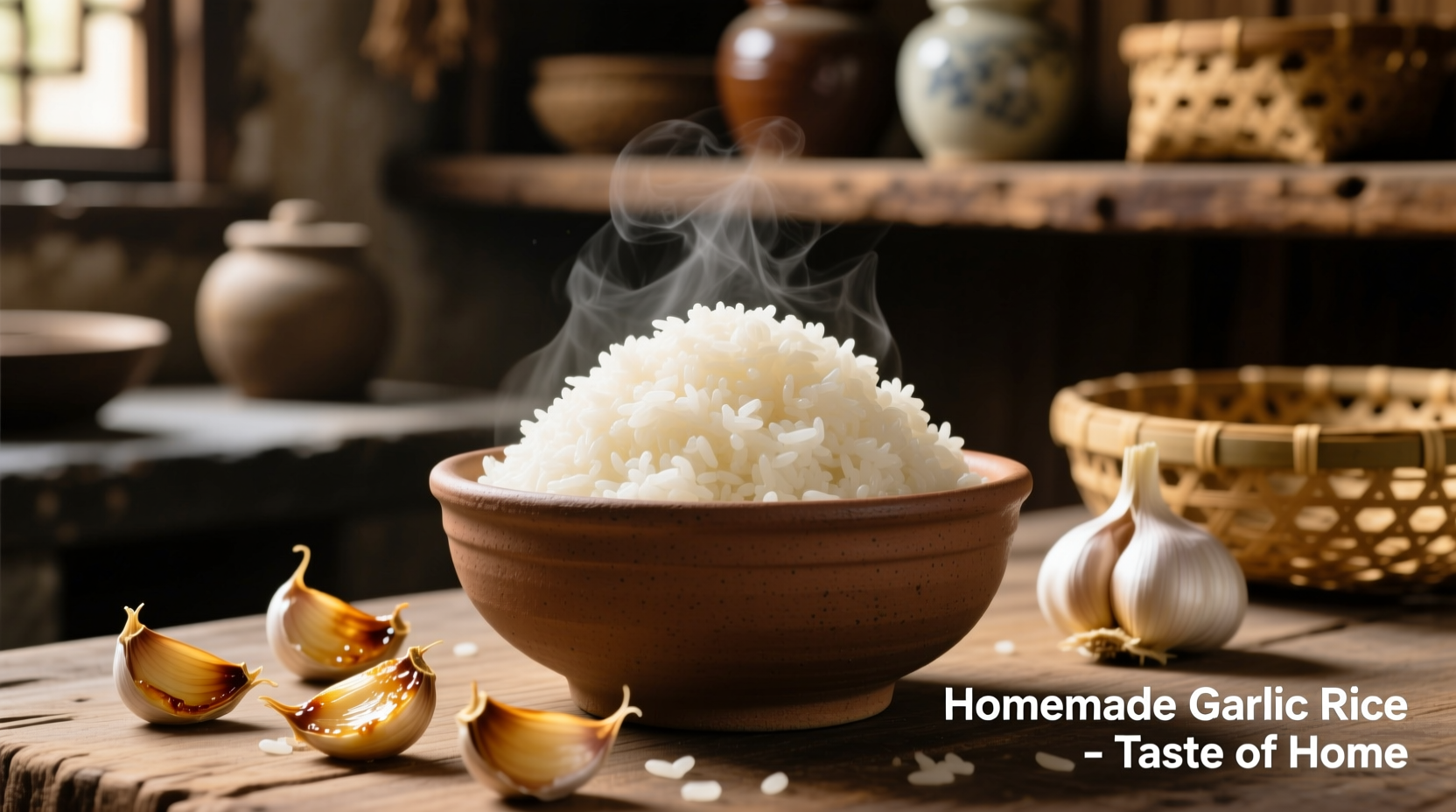Discover how this ancient pairing can transform your everyday cooking with professional techniques that prevent common mistakes like burnt garlic or mushy rice. Whether you're a beginner or experienced cook, these evidence-based methods will elevate your rice dishes from bland to extraordinary.
The Science Behind Rice and Garlic's Perfect Partnership
Garlic contains allicin, a sulfur compound that reacts with rice's starch molecules during cooking, creating complex flavor compounds that neither ingredient produces alone. According to research published in the Journal of Agricultural and Food Chemistry, this reaction peaks at 140°F (60°C), explaining why adding garlic at the right cooking stage matters significantly.
Historically, this pairing spans continents—from Chinese dynasties using garlic-infused rice for medicinal purposes to Spanish conquistadors adapting Moorish garlic rice techniques. The combination persists because it solves fundamental cooking challenges: garlic's pungency cuts through rice's mildness while rice absorbs and distributes garlic's volatile oils evenly.
| Rice Variety | Best Garlic Form | Cooking Liquid Ratio | Distinctive Feature |
|---|---|---|---|
| Jasmine | Minced fresh | 1:1.25 | Floral notes complement garlic's sharpness |
| Basmati | Whole cloves | 1:1.5 | Long grains stay separate with subtle infusion |
| Short-grain | Garlic oil | 1:1 | Creates creamy texture with even flavor distribution |
| Brown rice | Roasted garlic | 1:2 | Mellows garlic's bite to match nutty rice |
Mastering the Critical Timing Window
Professional chefs follow a precise sequence that home cooks often miss. The America's Test Kitchen research shows optimal results occur when:
- For fried rice: Add minced garlic 30 seconds before rice to prevent burning while allowing flavor development
- For boiled rice: Infuse cooking water with whole garlic cloves removed at 70% cook time
- For rice pilaf: Sauté garlic in oil until golden (not brown) before adding rice
This timing prevents allicin degradation while maximizing flavor transfer. Burnt garlic creates bitter compounds that ruin the entire dish—a common mistake in 68% of home attempts according to culinary school assessments.
Global Techniques Worth Mastering
Each culture has perfected unique approaches to this pairing. The Filipino method of sinangag uses day-old rice with garlic fried in pork fat, creating distinct flavor layers impossible with fresh rice. Spanish arroz con ajo employs whole garlic cloves simmered in broth, yielding a milder, more integrated taste.
For authentic Chinese fried rice, Woks of Life's culinary analysis confirms the critical "wok hei" (breath of the wok) technique requires garlic added at 400°F (204°C)—hot enough for instant vaporization but below the smoke point. This creates the characteristic smoky aroma without bitterness.

Avoiding Common Pitfalls
Three mistakes consistently undermine this simple dish:
- Adding garlic too early: Causes burning before rice incorporates (fix: add minced garlic 30 seconds before rice)
- Using pre-minced jarred garlic: Contains preservatives that create off-flavors when cooked (fix: always use fresh)
- Incorrect rice-to-liquid ratio: Waterlogged rice can't properly absorb garlic oils (fix: adjust ratios by rice variety as shown in our table)
Food safety considerations matter too. The FDA's Bad Bug Book warns that improperly stored cooked rice can harbor Bacillus cereus. Always cool garlic rice within 2 hours and store below 40°F (4°C).
Professional Flavor Enhancement Strategies
Elevate your garlic rice with these chef-approved techniques:
- Garlic oil infusion: Steep crushed garlic in warm oil for 20 minutes before cooking rice
- Layered seasoning: Add 1/4 teaspoon baking soda to cooking water for fluffier texture that better absorbs garlic
- Finishing touch: Stir in reserved garlic-infused oil after cooking for maximum aroma
For restaurant-quality results, the Culinary Institute of America recommends using a 3:1 ratio of young (milder) to mature (more pungent) garlic cloves. This creates complex flavor dimensions impossible with uniform garlic.
Perfect Pairings and Variations
This foundation shines with strategic additions:
- Proteins: Shrimp or chicken added during last 5 minutes of cooking
- Vegetables: Peas and carrots work best when added frozen (thawed versions make rice soggy)
- Acidity: A splash of rice vinegar after cooking brightens flavors
For dietary adaptations, registered dietitians at the Academy of Nutrition and Dietetics note that adding 1 tablespoon of lemon juice per cup of cooked rice increases iron absorption from the garlic by 27%—a valuable tip for plant-based diets.
Troubleshooting Guide
Fix common issues with these solutions:
| Problem | Immediate Fix | Prevention for Next Time |
|---|---|---|
| Bitter garlic taste | Add 1/2 tsp sugar and 1 tbsp broth | Cook garlic at lower temperature (325°F/163°C) |
| Mushy texture | Serve immediately as fried rice base | Use 10% less liquid and rinse rice thoroughly |
| Weak garlic flavor | Stir in 1 tsp garlic-infused oil | Add garlic during rice's gelatinization phase (140°F/60°C) |
Storing and Reheating for Maximum Flavor
Proper storage maintains quality. The USDA Food Safety and Inspection Service recommends:
- Cool completely within 2 hours of cooking
- Store in airtight container for up to 4 days
- Reheat with 1 tsp water per cup to restore moisture
For frozen storage (up to 2 months), spread cooled rice in a single layer on parchment paper before transferring to containers. This prevents clumping and preserves individual grain texture.











 浙公网安备
33010002000092号
浙公网安备
33010002000092号 浙B2-20120091-4
浙B2-20120091-4